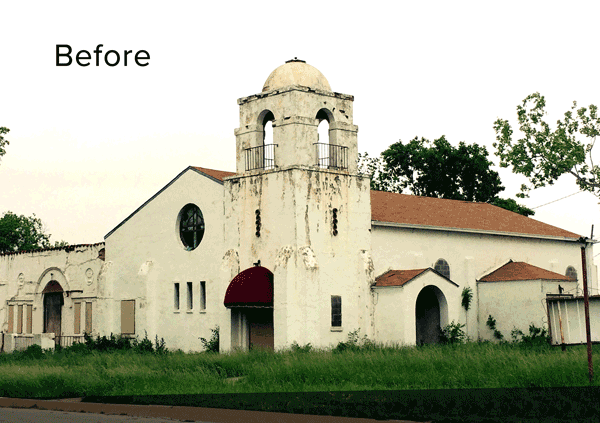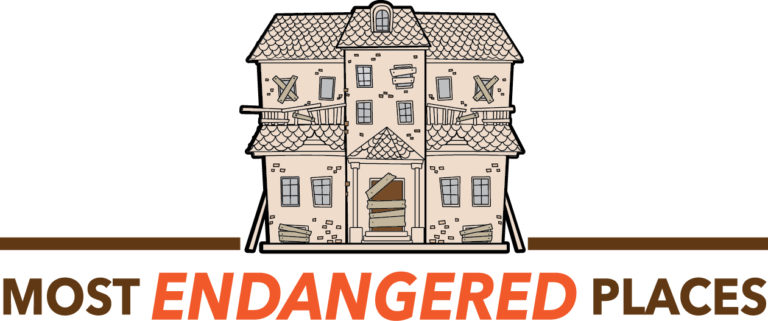
2025 Most Endangered Places List
The annual Most Endangered Places list, a vital program of Historic Fort Worth, Inc., is a marketing and educational tool that spotlights historic resources threatened by a variety of circumstances–extremely deferred maintenance, no local landmark designation, loss of parking, and lack of awareness of economic incentives to rehab historic buildings. Owners of properties recognized as “Endangered” benefit from increased public awareness and assistance from Historic Fort Worth, Inc. to address these issues. The List is released each year in May, during National Preservation Month.
2025 Most Endangered Place List
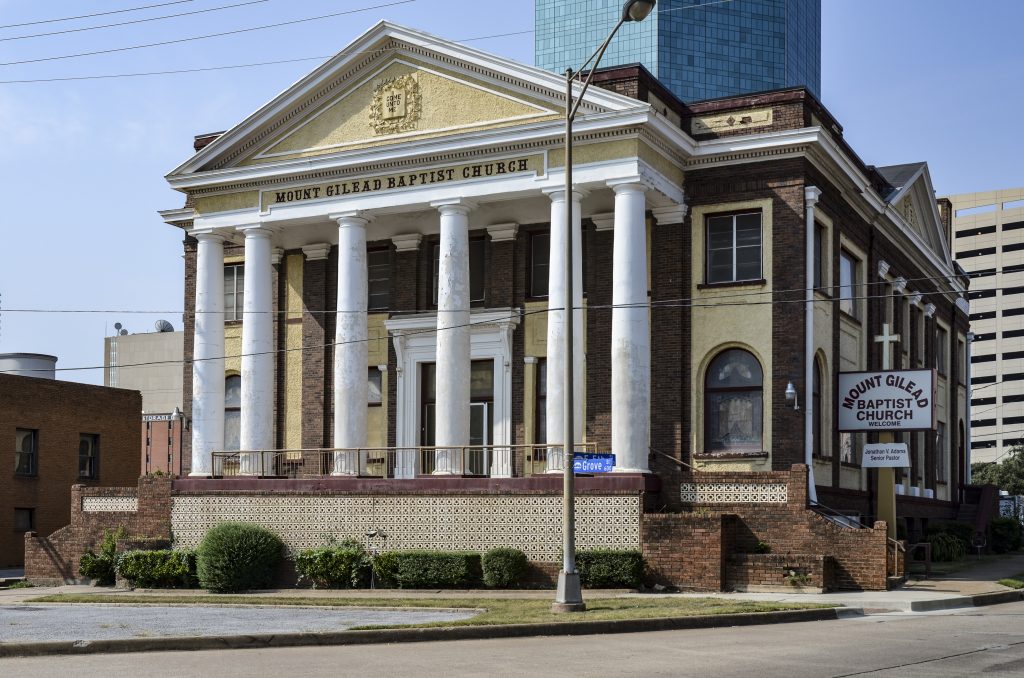

Mount Gilead Baptist Church
600 Grove Street
Date Built: 1912-1913
Owner:
Designer: William Sidney Pittman
Mount Gilead Baptist Church, built between 1912 and 1913, holds the distinction of being Fort Worth’s oldest African-American church. Designed by the prominent architectural firm Sanguinet & Staats and constructed by J.W.O. Guinn using materials from the B.W. Owens Lumber Company, the church is an enduring symbol of community and faith. Its distinctive raised basement—whose original windows have since been covered with tile—reflects the practical architectural decisions of the era. Listed in the Texas Comprehensive Historic Resources Survey (TCHRS), Mount Gilead is also considered eligible for the National Register of Historic Places, underscoring its historical and cultural significance in Fort Worth’s African-American heritage.
Editor’s Note: Although the church is included on this endangered list, it remains open and continues to hold regular services.

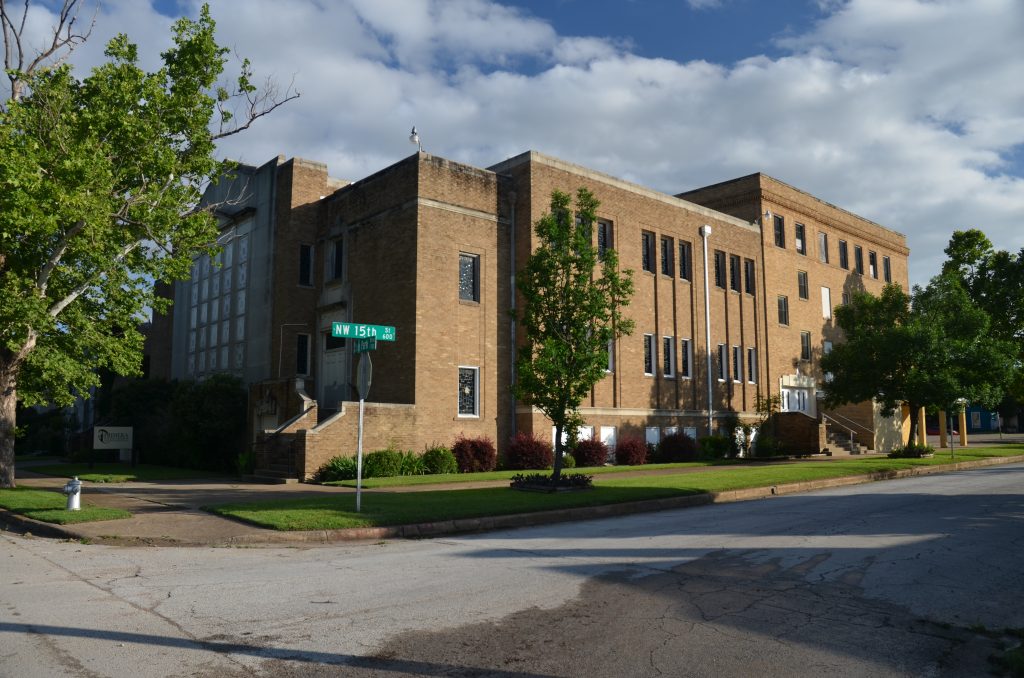
North Fort Worth (Primera) Baptist Church
1519 Circle Park Blvd.
Primera Baptist Church, located in Fort Worth, is a historically significant structure originally built between 1912 and 1913. Designed by the renowned architectural firm Sanguinet & Staats and constructed by J.W.O. Guinn using materials from the B.W. Owens Lumber Company, the building reflects early 20th-century craftsmanship and design. Notably, its raised basement—once illuminated by windows that have since been covered with tile—illustrates practical adaptations over time. Though it now serves a different congregation, the structure was originally home to Mount Gilead Baptist Church, Fort Worth’s oldest African-American church. It is listed in the Texas Comprehensive Historic Resources Survey (TCHRS) and is considered eligible for inclusion in the National Register of Historic Places, recognizing its enduring cultural and architectural importance.
Farrington Field
1501 University Drive
- Owned by the Fort Worth Independent School District
- 7th listing on HFW’s endangered list
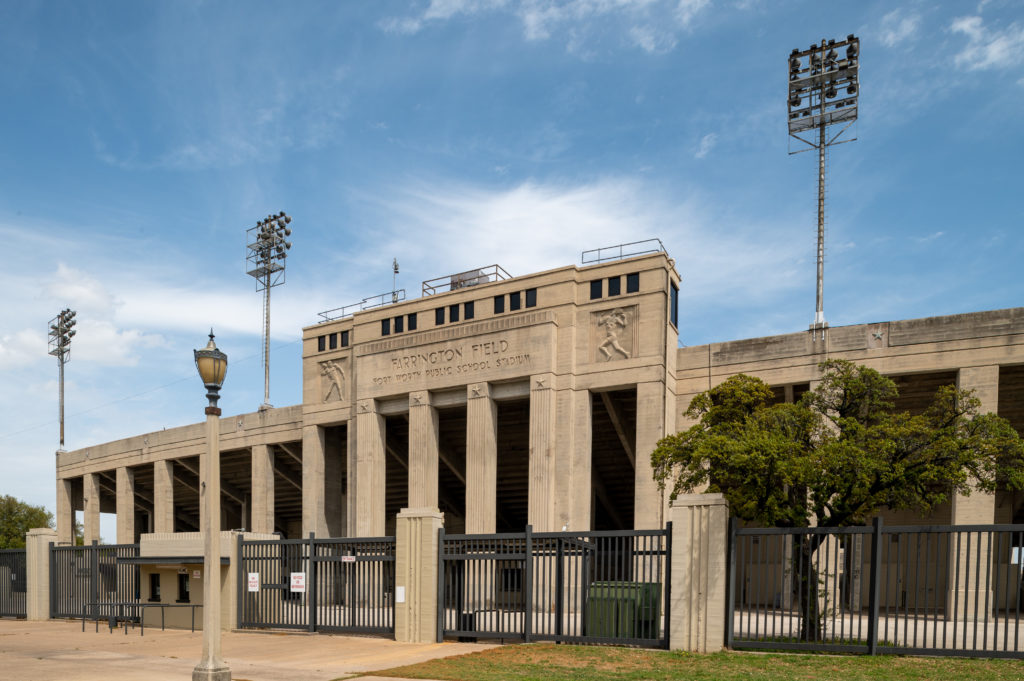
Oakwood Cemetery Chapel
701 Grand Avenue

- The Oakwood Cemetery Chapel is built on land donated in 1879 by John Peter Smith. The Chapel roof must be replaced due to water penetration, and the gorgeous stained-glass windows are secured by wooden frames that are severely rotted. Local luminaries buried in the cemetery are Electra Waggoner, Samuel Burk Burnett, Jim “longhaired Jim” Courtright, Hora S. Carswell, Jr. and John Peter Smith.
- The project cost is estimated to be $100,000 and the Oakwood Cemetery Association is a 501(c) (3) charity.
Undesignated Historic Schools
Although some of Fort Worth’s schools are landmarked, most are not. For eight decades the FWISD has given the school children of Fort Worth an amazing collection of architecturally significant buildings in which to learn. Now fewer state dollars and declining enrollment threaten these schools with closure.
Additionally, many undesignated historic schools shape the neighborhoods where they are located. To give these schools the best chance of a future, HFW encourages the FWISD to landmark its remaining undesignated schools before they are sold.

S.S. Dillow Elementary
- FWISD Board of Trustees voted on April 22, 2025, to close the school after the 2024-25 school year.
- The first portion of the school was built in 1937 as part of the PWA. It was named after Samuel S. Dillow, a Polytechnic civic leader. Dillow was a grocery store operator and President of First State Bank of Polytechnic. He was also a Poly School Board Trustee. This Mediterranean building has undergone many additions, most of which were designed by Easterwood & Easterwood Architects.
(Editors Note: On September 25, 2025 the school was engulfed by fire.)
McLean Middle School
3816 Stadium Drive
McLean Middle School, completed in 1955, is a strong example of the International style as interpreted in mid-20th-century public architecture. Designed by the prominent Fort Worth firm Wilson, Patterson & Associates and constructed by Cadenhead and Roeser, the school exemplifies the clean lines, lack of ornamentation, and utilitarian materials associated with this style. Its flat roof, extensive stretches of metal hopper-style windows, and rectilinear form reflect post-war architectural trends that emphasized light, air, and efficiency in educational design. The school was named for William Pickney McLean, a respected lawyer, Confederate soldier, and Texas statesman who lived from 1836 to 1926 and served in both the state and U.S. legislatures. While the building has previously been considered ineligible for the National Register of Historic Places, the architectural integrity of its design and its connection to an important historical figure suggest that a reevaluation may be appropriate.
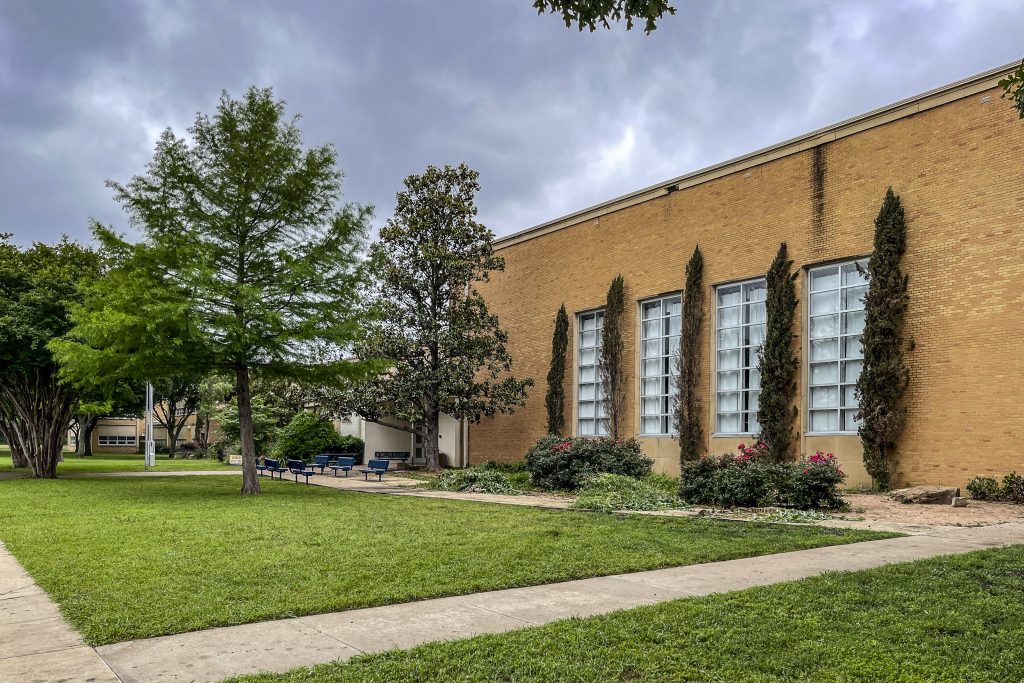

J.P. Elder Middle School
709 NW 21st Street
J.P. Elder Middle School, constructed in 1927, is an architecturally significant building in Fort Worth designed by Wylie G. Clarkson in the Tudor Revival style. Built by Butcher & Sweeney, the three-story structure is distinguished by its striking polychrome brick cladding, a hallmark of the period’s craftsmanship. The school’s historic and architectural value has earned it a Demolition Delay designation from the City of Fort Worth, underscoring its importance as a community landmark worthy of thoughtful preservation.
Hubbard Heights Elementary School
1333 Spurgeon Street
Constructed in 1922 as a 2-story, 6-room brick building, Hubbard Heights began as a Tarrant County common school. In 1934 the building was expanded with a $96,000 addition, the first project to be completed as part of the Public Works Administration program in Fort Worth. Architect Elmer Withers gave the building its present Mediterranean Revival appearance with its cross-gabled roof sheathed with red clay tile and its yellow brick exterior.
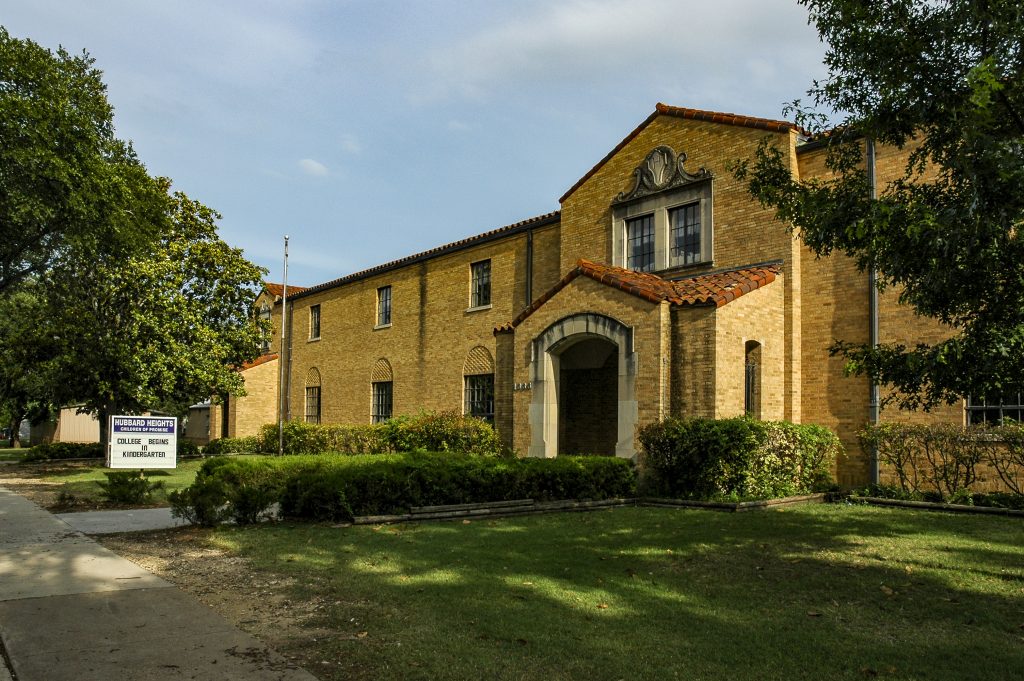
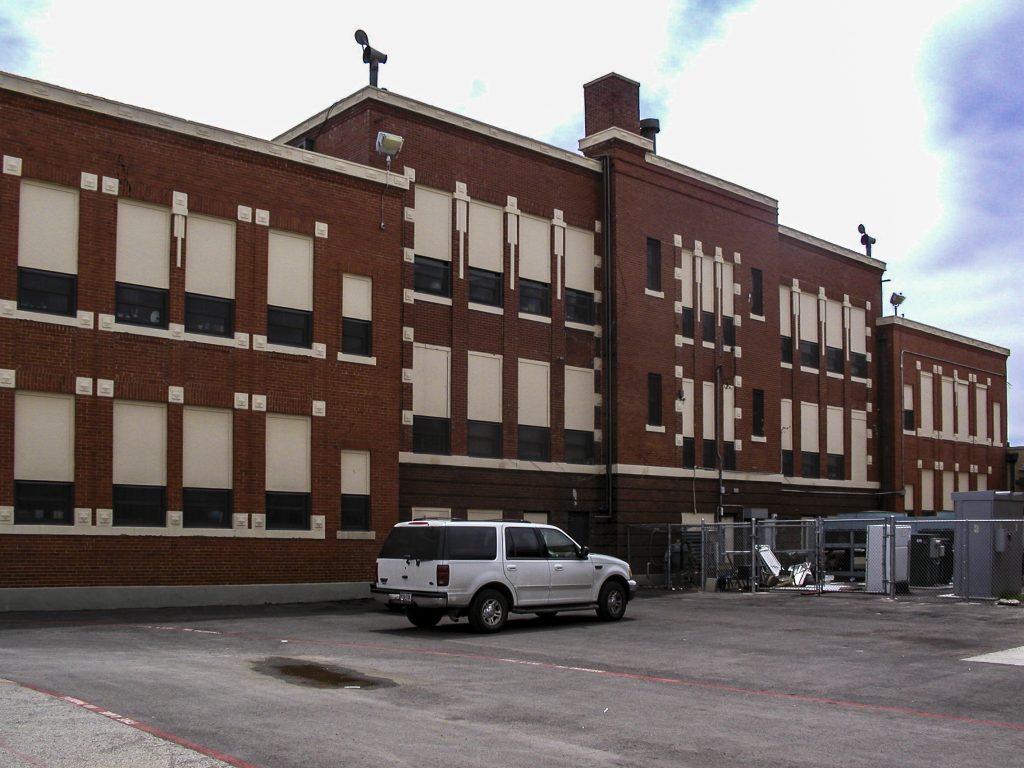
Richard J. Wilson Elementary School
900 West Fogg Street
In 1913, the South Fort Worth Common School District purchased this property from Interurban Land Co. In 1914 the school opened as South Fort Worth School. The basement is heavily rusticated and is a slightly darker color brick than the upper two floors. The building is constructed with red brick and cast stone window sills, coping and decorative banding. The school has undergone many additions. Richard Wilson was a long-time principal, and the school was renamed in his honor.
Download the 2003 Fort Worth Historic School Survey
A History of Fort Worth Schools
Local, state and federal tax credits
or incentives for the rehabilitation of historic buildings
Local, state and federal tax credits or incentives for the rehabilitation of historic buildings are available to those who comply with various governmental programs. Please see:
https://historicfortworth.org/resources/tax-incentives-and-education/
Local, state and federal tax credits or incentives for the rehabilitation of historic buildings are available to those who comply with these governmental programs.
City of Fort Worth Historic Rehabilitation Program. (A 10-year property valuation tax freeze on the city’s portion of your tax bill.)
https://www.fortworthtexas.gov/departments/development-services/historic-preservation#section-5
Statewide Program for 25% Restoration Tax Credit for commercial and/or non-profit owned buildings
https://www.thc.texas.gov/public/upload/publications/tax_credit-report-2022.pdf
Federal Incentive for 20% Tax Credit For Commercial Buildings
The State and Federal Tax Credits can work together for certain projects.
https://www.thc.texas.gov/public/upload/forms/factsheets/thc-architecture-pti-factsheet.pdf
Historic Properties Saved Through Preservation Advocacy
Established in 1969 and honored with the Governor’s Award in Historic Preservation in 2009, HFW is dedicated to preserving Fort Worth’s unique historic identity through education, stewardship, and leadership. The organization’s headquarters, a museum and preservation library are located in the 1899 McFarland House, 1110 Penn Street.
As a comprehensive preservation charity, HFW’s board and staff work behind the scenes and in the public arena to create opportunities for those places they do not own that shape Fort Worth’s unique historic identity. Examples of successes from this community-wide program follow:

African American Knights of Pythias Hall (1925) 900 East 2nd Street: HFW funded a successful nomination for the Plaza’s placement on the National Register of Historic Places at the national level of significance. This effort spawned a sensitive restoration plan which is being implemented.
Chase Court (1906) 1700 Hemphill Street: It’s placement on the endangered list prompted the neighbors of Fort Worth’s first gated community to establish a local historic district. (Listed in 2014
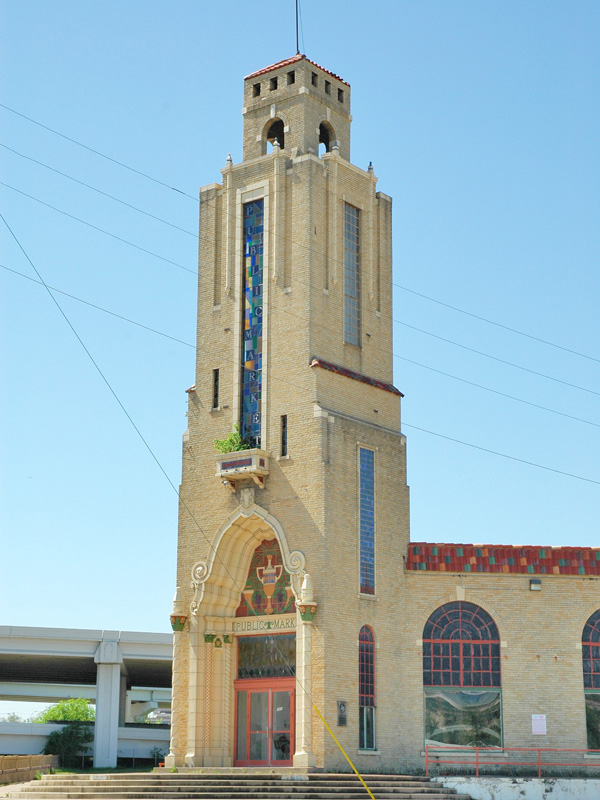
Fort Worth Public Market (1937) 2717 Avenue B: With one month left before its demolition, HFW developed an e-blast about this landmarked building and an owner of a restoration firm bought the building and restored it.
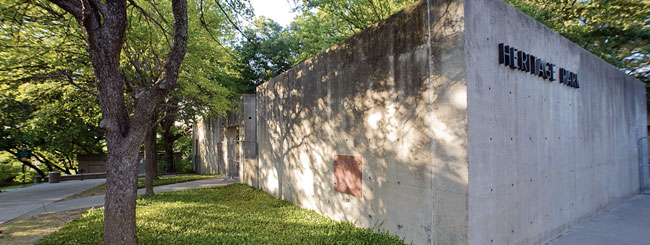
Heritage Park Plaza (1976-80) Western edge of the bluff at Houston Street: HFW funded a successful nomination for inclusion in the National Register of Historic Places that created the insight for a new, sensitive restoration plan. (Listed 2005, 2008, 2009 & 2012)
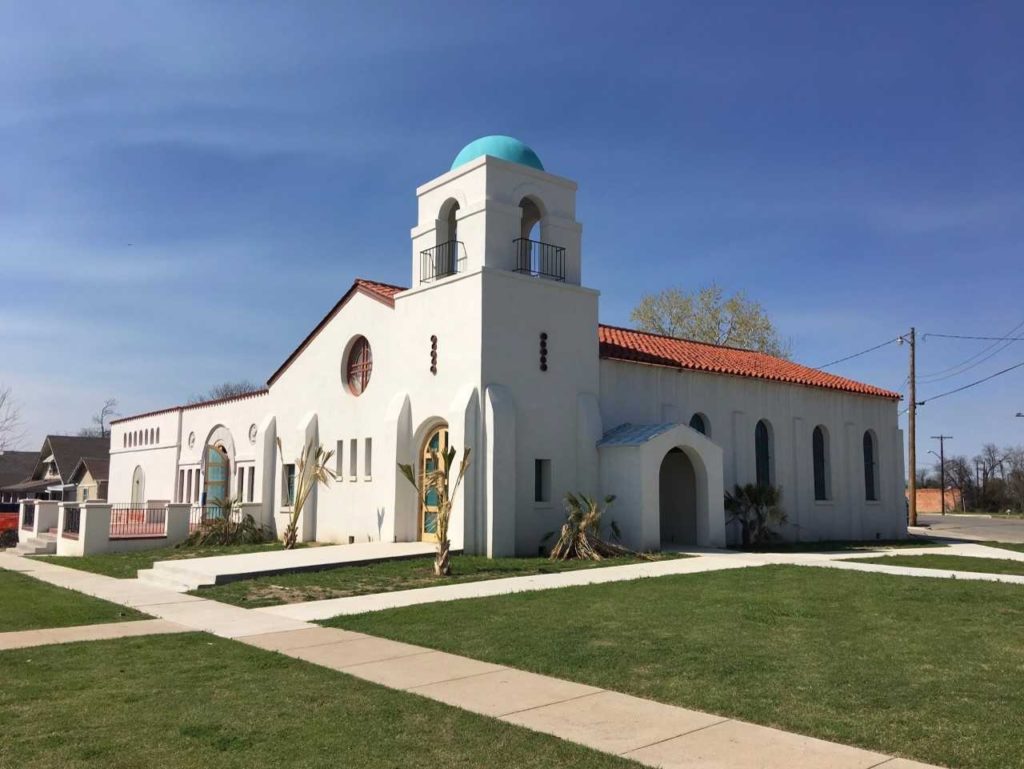
Meisner-Brown Funeral Home (1937) 2717 Avenue B: With one month left before its demolition, HFW developed an e-blast about this landmarked building and an owner of a restoration firm bought the building and restored it.

Ridglea Theater (1950) 6025 Camp Bowie Blvd.: HFW stopped a plan to demolish all but the tower and the lobby until a new owner emerged who restored the theater back to its original splendor. (Listed in 2004, 2005, 2007, 2008 and 2010.)

Stockyards (1900-24): North Main Street at Exchange Avenue and spanning for many blocks. HFW funded a historic resources survey that resulted in a local historic district. (Listed in 2012 and 2014).
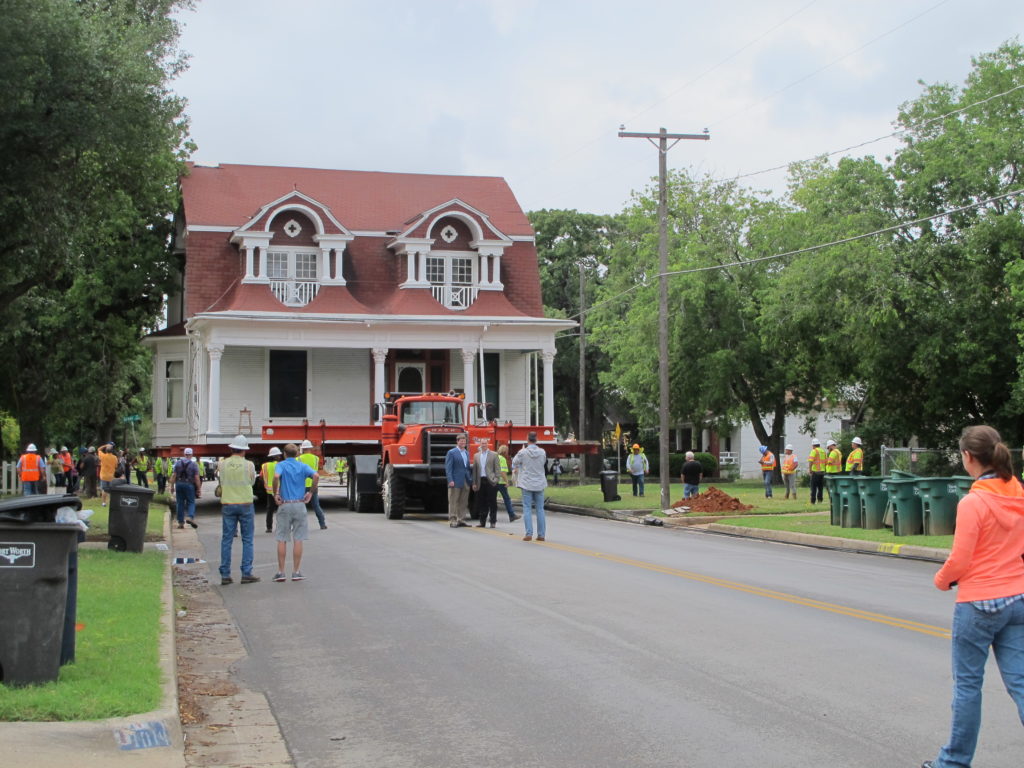
Talbott-Wall House (1903) was at 915 Samuels Avenue and moved to 1102 Samuels Ave.: HFW worked with a developer to move this grand house to a new lot down the street allowing preservation and progress to come together on Samuels Avenue.
To view a comprehensive list of all the past years, it is available here : 2004-2022 – HFW Endangered List.
2024 Most Endangered List
2023 Most Endangered List
2022 (list) (narrative)
2019 (list) (narrative)
2018 (list) (narrative)
2017 (list) (narrative)
Take a map-based tour of 2017’s Most Endangered Places.
Thanks to Kate Holliday and son William Dibble for their work on this project.
2016 (list) (narrative)
2015 (list) (narrative)
2014 (list) (narrative)
2013 (list) (narrative)
2012 (list) (narrative)
2011 (list) (narrative)
2010 (list) (narrative)
2009 (list) (narrative)
2008 (list) (narrative)
2007 (list) (narrative)
2006 (list) (narrative)
2005 (list) (narrative)
2004 (list) (narrative)
Photos from 2019 MEP announcement at Thistle Hill

